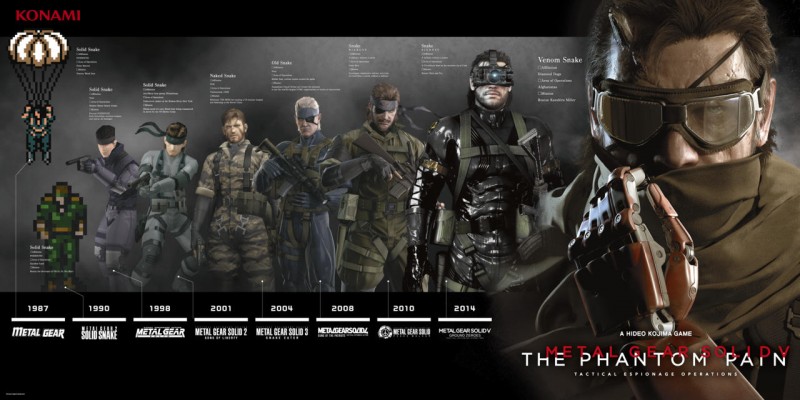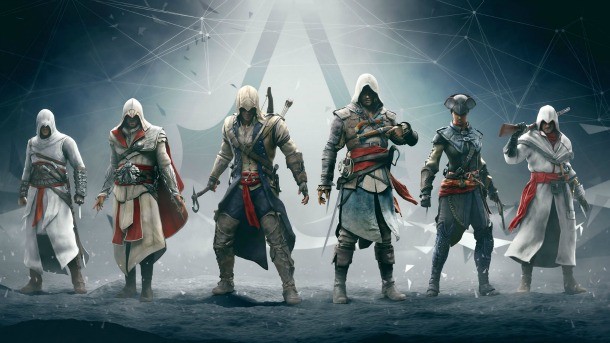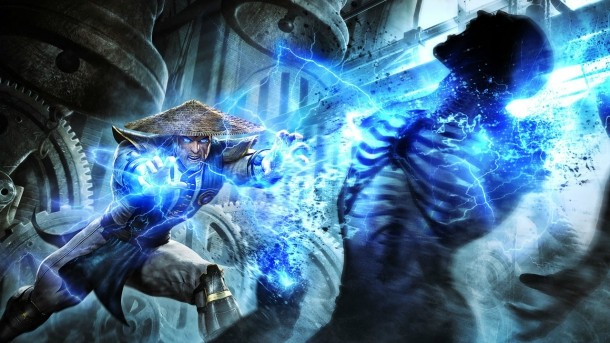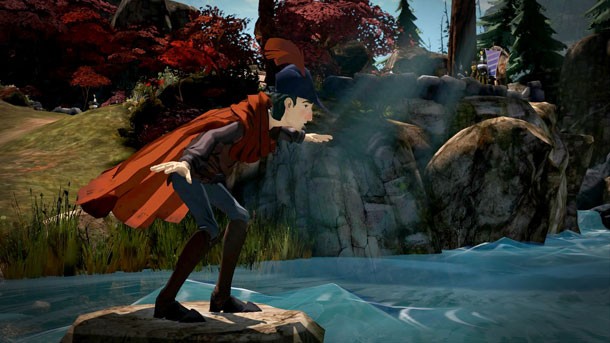Gaming's Longest Continuous Stories

When you think about video game narratives, it’s a bit challenging to find many that contain single, perpetual narratives. To test that assumption, we’ve compiled a list of titles featuring lengthy plotlines and abundant canon entries. Each of these series will also have new installments arriving either this year or in 2016.
To assemble our list, we established these guidelines: the series has one continuous, overarching narrative; most entries in the series must contribute to the overall plot; and the story hasn’t been rebooted yet. Due to these rules, series more anthological in nature, such as Final Fantasy or Silent Hill, don’t make the cut. By no means is this meant to be a definitive list, so please share your picks in the comments below.
Warning: The following article features some minor spoilers to the franchises listed below.

Resident Evil (15 Canonical Entries)
After nearly 20 years, multiple protagonists, and a boatload of zombie strains, the world continues to suffer the effects of the Umbrella Corporation’s dastardly bioweapon research. Resident Evil’s story begins with an isolated incident in a mansion before rapidly evolving into a worldwide struggle where seemingly anyone of ill-intent possesses a new flavor of virus. Even the children of Barry Burton and Albert Wesker (Moira Burton and Jake Muller, respectively) have been ushered into the madness. With how convoluted the series has become, some would argue Resident Evil is one of the franchises most in need of a reboot–something that’s been rumored in the past.

Assassin’s Creed (12 Canonical Entries)
Ubisoft’s juggernaut is the youngest franchise listed here, but you’d never guess it by looking at the long list of released titles. Assassin’s Creed I and II alone have handheld spin-offs, but the floodgates burst when the series became annualized beginning with AC: Brotherhood in 2010. The fiction was once sewn together by Desmond Miles, a modern-day descendant of several Assassins who used the Animus machine to experience their lives and prevent the apocalypse. Once that unifying thread finished in Assassin’s Creed III, the contemporary glue weakened. Today, it barely exists, focusing on multi-generational sages and computer hacking mini-games. Can we have the Truth back?

Metal Gear (11 Canonical Entries)
Hideo Kojima’s espionage epic has kept fans engaged fans since 1987, and we’ve only now nearly closed the narrative loop on the saga. Multiple Snakes, three cyborg ninjas, two scientists named Emmerich, and one Ocelot (who’s one of the few constants in the franchise) have aided or prevented nuclear war caused by the titular weapons. With Kojima’s relationship with Konami up in the air, it’s unclear if the publisher will continue the series in any meaningful, non-Pachinko machine way – unless Metal Gear Rising 2 actually winds up being a thing.
On the next page, we look at one of the fabled fighting franchises, one of the biggest shooters of all time, and more.

Mortal Kombat (11 Canonical Entries)
When it comes to story, no fighting franchise holds a candle to Mortal Kombat’s incredibly intricate (read: absurd) mythos. Slain characters are revived more often than in Dragon Ball Z, and the titular tournament hardly means anything anymore as the fighting has endured long after Earthrealm’s initial victory. I know what you’re thinking: The series was rebooted in 2011. You’re technically correct, but MK9’s narrative reset occurred within the context of the series’ fiction; Raiden tries to prevent everyone from dying (again) in Armageddon by altering the events of the past in order to forge a better future. That backfires completely with nearly everyone being killed off anyway, then reborn as corrupted revenants. This makes the reboot more of a plot device than a true reset.

Halo (9 Entries)
Like Star Wars, Master Chief’s exploits were revived with a new trilogy set to extend the life of the series for the next several years. From the Covenant to the Prometheans, Master Chief has performed as many rescues as there are floating ringworlds, often single-handedly. The games contain the vital information required, but diehards would do themselves a disservice if they skipped the plethora of Halo novels and other media that enrich the fiction with threads that are rarely, if ever, woven into the core titles.

King’s Quest (9 Entries)
Sierra’s classic adventure is one of the few series to chronicle the lives of an entire family. Players have taken Graham from knight to kinghood, gotten him hitched, and taken his wife and children on their own adventures. The series’ lineage lives on through the current, episodic King’s Quest by The Odd Gentlemen. Neither a sequel nor reboot, the game is a re-imagining that acknowledges the original canon but reinterprets events, such as Daventry Well treasure hunt and dragon encounter, in new ways. It also continues the story of an elderly King Graham with a narrative framing similar to The Princess Bride.

Kingdom Hearts (9 Entries)
This Disney/Final Fantasy crossover is one of the few fictions to rival Metal Gear in sheer convolutedness. What starts as a tale of a boy saving Disney-themed worlds with a big key is essentially now Star Wars. A huge war wipes out all the magic sword-wielders, a fallen hero redeems himself, and elaborate trials determine who becomes a Jedi Keyblade Master. With only two core installments in nine games, a majority of the series’ canon exists in a tangled web of prequels and side-stories on isolated platforms. This was a disaster for fans who only owned one or two devices before the HD “decimal” collections raked those scattered games together into a few, relatively neat piles.

Warcraft (4 Entries)
If there’s one point Warcraft’s long and involved story hammers home, it’s that the Horde and Alliance are the Hatfields and McCoys of video games. No matter how many objectively graver threats plague Azeroth or temporary truces are established, the warring factions seem destined to remain at odds. The Burning Legion invades? They keep fighting after the demonic threat is squelched. A giant death dragon obliterates the world? They keep fighting. Encounter a land of relatively peaceful anthropomorphic pandas? They still keep fighting, and then drag the poor creatures into it. You’d think after more than 20 years the tension would simmer down – though that wouldn’t be much fun.

Get the Game Informer Print Edition!
Explore your favorite games in premium print format, delivered to your door.
- 10 issues per year
- Only $4.80 per issue
- Full digital magazine archive access
- Since 1991









